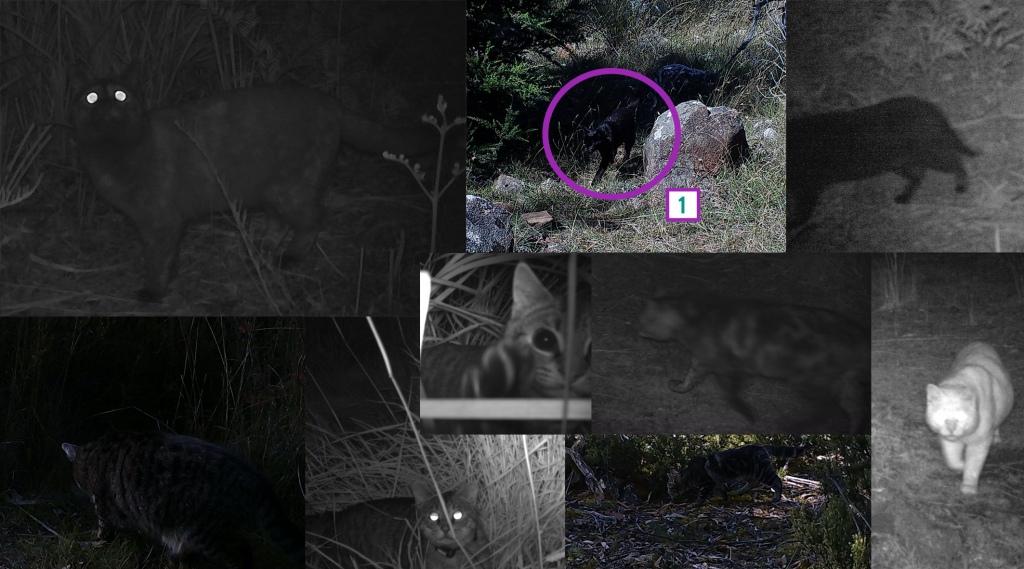Felidae | Felis catus
Cats first arrived in Australia with European settlers and navigators around 1788 before spreading across most of the continent and its islands by 1890. An estimated 2.1-6.3 million feral cats currently occupy 99.8% of the Australian landmass, this figure fluctuating with rainfall conditions. Of the 3.77 million pet cats in Australia, an additional 2.1 million roam freely for at least part of their day.

Lifestyle
Feral cats are typically solitary animals. They are most active at dusk and dawn but can be seen at all times of day and night. Like most predators, cats establish home ranges, within which they defend a core area of habitat (i.e. their territory). Home range size of cats can range from 116-2324 hectares, but in the Midlands of Tasmania were 1058 and 314 ha for males and females respectively. Average nightly movements of cats in one Tasmanian study were 8.6 km for females and 13.7 km for males but individuals can disperse much further. Females may breed from 7-12 months old, are capable of having two litters annually, each with an average litter size of four kittens.

Key identifying features
Typically, a lean and muscular body. May be larger than the average domestic cat. Flat face with pointed ears. Long tail. Coat colour varies but tabby is most common in remote areas (‘wild type’). There are more striped and tortoiseshell cats in the wild but fewer black, white and ginger cats. Long-haired feral cats are rare. Some coat colours can make cats difficult to detect (1).
Similar species
None.
Habitats
All habitats. Cat densities increase with rainfall and rabbit numbers. They prefer linear habitats along roadsides, shelterbelts and at the edges of forest. Cats are less common in more physically complex habitats with rocks, shrubs, tall groundcovers and fallen wood.
Diet
Cats prefer hunting live prey but may scavenge in urban settings. In a single year, feral cats in Australia are estimated to consume at least 1144 million mammals, 649 million reptiles, 1086 million invertebrates, 377 million birds, 93 million frogs and bats from 24 different species. One Tassie cat was recorded killing a pademelon that weighed around 4 kg but they typically prey on animals smaller than themselves. Rabbits are a staple prey item.
Disease
Australian feral cats are known carriers and reservoirs of at least 36 pathogens or diseases. Cats are the sole definitive host of toxoplasmosis in Australia, a disease caused by a parasitic infection (Toxoplasma gondii). Toxoplasmosis can impact the health of native animals as well as livestock and humans. More than 8500 Australians are estimated to be hospitalised from causes linked to cat-borne disease each year.
